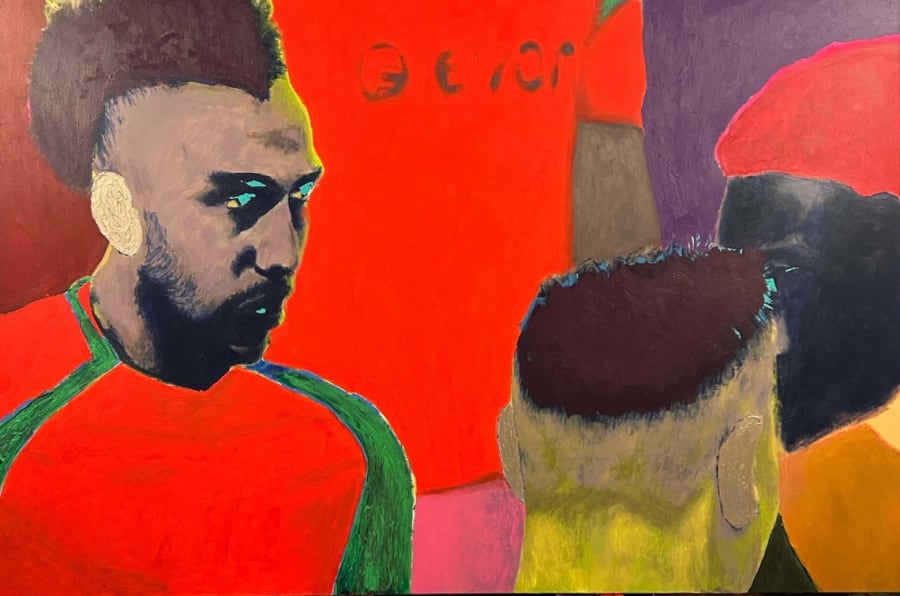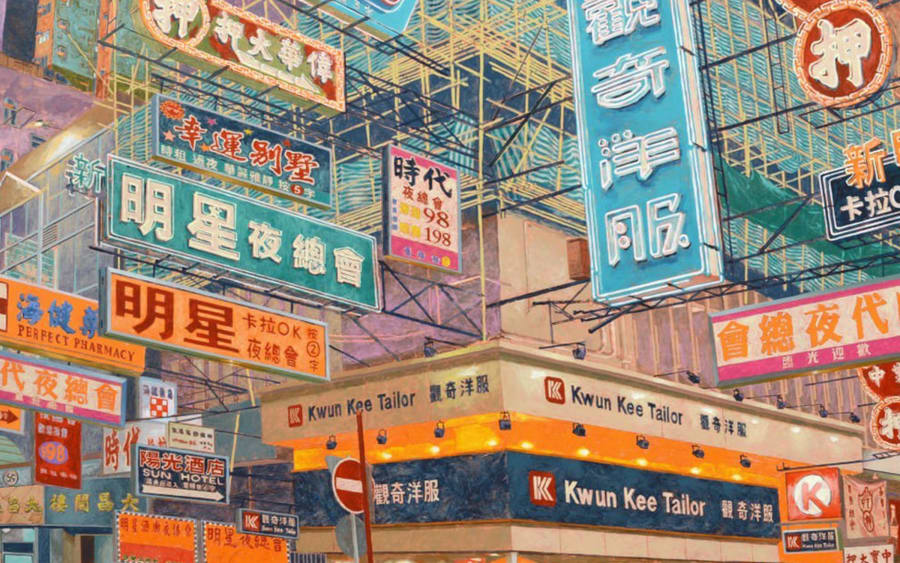「我畢業後從杭州搬到北京,那時起,我才真正決定以藝術為職業。在那之前,我只是單純地覺得繪畫比其他任何事情都讓我著迷。」
「遇見同為藝術家的丈夫後,我搬到了北京,跟著他去看了不少畫室。我是白羊座,天性衝動,那時我開始在腦海中想像北京的生活——然後我就這樣決定了。」
「剛到北京的那段日子,我感覺特別混亂。我住在北京798藝術區附近,挨著正在施工的地鐵站,周圍全是臨時搭建的藍頂建築。北京這座城市永遠在拆遷與重建中不斷變化。而這種混沌之感,成為了我創作的起點。我畫的不只是建築,更是我的情感。」
「我花了很長時間才適應北京。這裡氣候乾燥,我的皮膚經常開裂,瘙癢難耐。寬闊的街道讓城市的強風毫無阻攔地肆意奔襲,巨大的金屬看板發出低沉的嗡鳴。每當在城市中穿梭,我總覺得自己在跟著這座城市的節奏前行。」
「這種不適感促使我去關注城市規劃,探索景觀與權力的交匯。沒想到,這座城市反倒幫我找到了自我,塑造了我的身份。它迫使我直面一些根本性的問題。而我感受到的張力,成了我個人生活和創作的能量源泉。」
「有一次回上海,我竟然迷了路。以前,我家附近有個大型洗浴中心,是週末家庭休閒的好去處。可那年我回去時,浴場已經消失得無影無蹤,我也因此迷失了方向。周邊環境的快速變遷讓我一陣恍惚,我深刻地意識到城市的變化是如此之快。在中國的中心城市,建築的平均壽命只有短短14年。它們被拆除往往不是因為年久失修,而是為了順應新的城市規劃。」
「這種加速的變遷,對在這些城市中成長的人影響深遠。我們的觀察方式、思維模式和行動習慣,無疑與那些成長於法國小鎮的人截然不同。我的作品就試圖捕捉這種代際視角,以及生活環境對我們的影響。」
「我現在的工作室在上海郊區的松江。2019年底,我回到了這座城市。當時,我對城市規劃和建築的研究進入了新階段,而上海豐富的歷史和充滿活力的文化深深吸引著我。我知道,是時候回家了。」
「油畫的層次感讓我能夠展現城市規劃的時間維度。比如,我可能先畫一層北京的天際線,然後再往上疊加一座上海的銀行。通過這樣的創作方式,我也用畫作記錄了自己的移動軌跡。」
「研究常常引領我開啟未知領域的大門。在閱讀同濟大學建築師的訪談時,我發現,自1980年代以來,中國許多建築師都深受日本新陳代謝派(Japanese Metabolism)運動的影響。於是,我開始探索這個流派的理念。我的目標不是成為建築師或理論家,我只是單純跟隨自己的好奇心。比如,在研究期間,我在北京租了輛車,花了一個月時間拍攝這座城市——特別是那些讓我著迷的天橋。」
「我的每個項目都有一個起點。今年,我遊歷了東南亞,開始關注熱帶建築,思考溫暖氣候下高層建築的可持續性問題。目前,我正在創作一組系列作品,描繪新加坡和印尼1970年代和1980年代的觀景台建築。」
迪亞高.里維拉(Diego Rivera)是深刻影響我的藝術家之一。他的壁畫探討了技術與人性之間的關係,令人歎為觀止——特別他在底特律創作的作品,展現了一個由機器構建的烏托邦未來。同樣的,在研究社會主義現實主義城市雕塑時,我也經常思考一個核心問題:不同時代如何塑造新的『人』和新的人性?」


